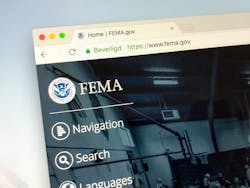For the past five years, the Disaster Recovery Reform Act’s pre-disaster hazard mitigation guidelines have allowed the use of building codes from the two most recent editions. This gives residential construction professionals flexibility at the state and local levels. Unfortunately, that changed in October.
The Federal Emergency Management Agency (FEMA) now calls for adherence to only the most recent edition of building codes. That lack of flexibility has become a serious concern for local governments and builders across the nation.
As the National Association of Home Builders (NAHB) has pointed out to lawmakers, this requirement puts pressure on jurisdictions to adopt building codes without a thorough vetting and amendment process. This could result in costly code changes that do not contribute to meaningful safety and resiliency improvements.
But a solution is in the works.
The Promoting Resilient Buildings Act
In December, the House of Representatives approved NAHB-supported legislation that would help jurisdictions preserve local control over the building code adoption process while encouraging communities to take steps to withstand and recover from extreme events.
The Promoting Resilient Buildings Act (H.R. 5473) allows grants under the Pre-Disaster Mitigation grant program to use the two latest codes indefinitely. It also allows capitalization grants under the Safeguarding Tomorrow Revolving Loan Fund Program to be used to implement the two latest editions of codes instead of only the latest edition.
Reps. Chuck Edwards (R-NC) and Donald Norcross (D-NJ) introduced the bill with Reps. Nick Langworthy (R-NY), Josh Gottheimer (D-NJ). Resident Commissioner Jenniffer González-Colón (R-PR) joined as co-sponsors.
The requirement puts pressure on jurisdictions to adopt codes without a thorough vetting and amendment process.
Residential Retrofit and Resilience Pilot Program
Under this legislation, a residential resilient retrofit means a project that is designed to increase the resilience of an existing home or residence using mitigation measures that the administrator determines reduce damage and impacts from natural disaster hazards and risks that are most likely to occur in the area where the home is located.
This includes:
• Elevations of homes and elevations of utilities within and around structures to mitigate damages
• Flood-proofing measures
• The construction of tornado safe rooms
• Seismic retrofits
• Wildfire retrofit and mitigation measures
• Wind retrofits, including roof replacements, hurricane straps, tie-downs, and other measures.
It’s important to note that as remodelers retrofit aging homes to improve energy efficiency, in many cases they are also improving those homes’ resistance to natural disasters, including floods, hurricanes, tornadoes, and wildfires. Research indicates that homes built to more contemporary codes perform better than older homes when subject to natural hazards.
NAHB is working to get a companion bill introduced in the Senate. Prospects are considered good, given that the bill enjoyed broad bipartisan support and passed unanimously in the House.
Alicia Huey, a Birmingham, Ala.-based custom builder and developer with 30+ years of experience is NAHB’s 2023 Chairman.

